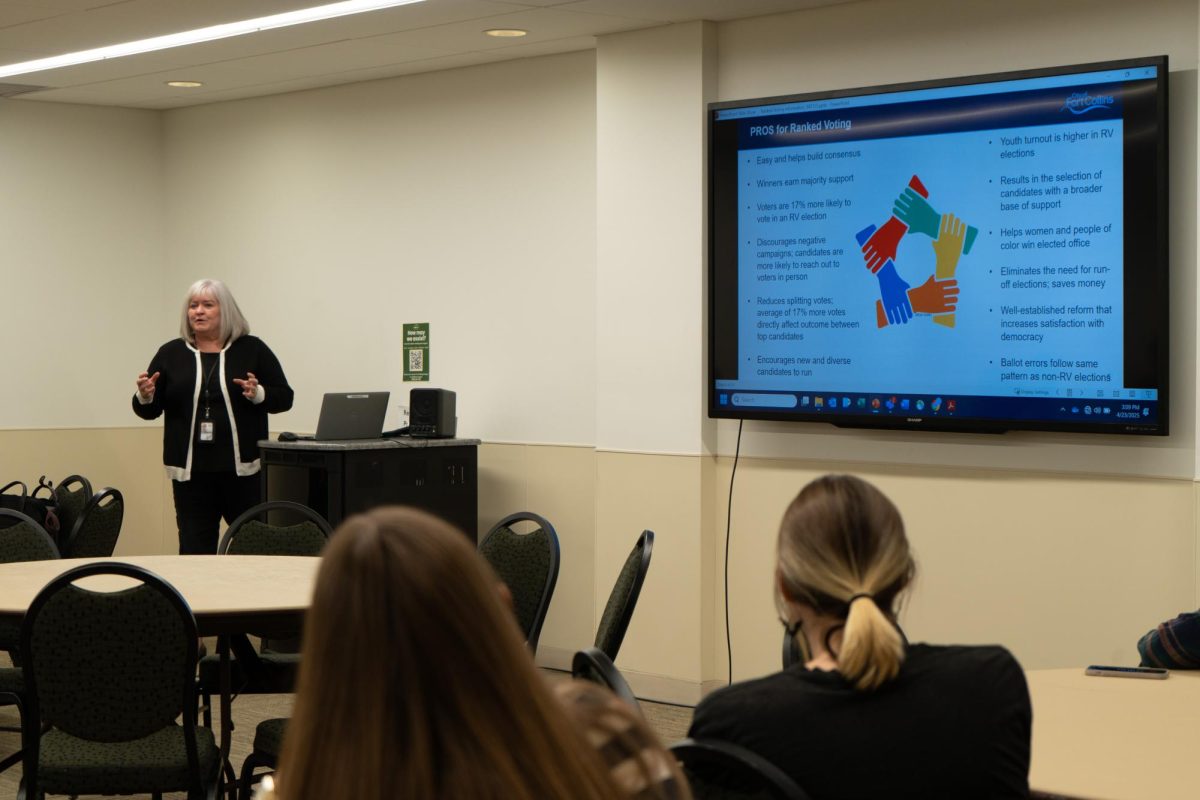A Colorado State University research team’s air quality monitors, which will soon sit in backyards across the nation, will provide citizens with an opportunity to contribute to National Aeronautics and Space Administration research.

The CSU research team, Citizen-Enabled Aerosol Measurements for Satellites, received $1.6 million in funding from NASA to better map air quality from the ground, which will improve NASA’s satellites detection of pollution from space.
CEAMS researches particulate matter called PM2.5, which is any particle in the air that’s has a diameter of less than 2.5 microns. PM2.5 can come from anything including ocean spray from crashing waves, forest fire smoke and man made pollution.
The group is looking into PM2.5 because it causes more negative health effects due to its small size.
CEAMS was one of six teams selected out of the sixteen citizen scientists projects for the funding. With the funding, CEAMS was able to build air quality monitors that utilize improvements in technology that cost around $1,000.
These monitors normally cost $20,000-$50,000 according to John Volckens, the principal investigator for this project.
“We’ve taken advantage of this do-it-yourself electronics revolution that’s happened over the last 10 years,” Volckens said. “So a lot of those components can be purchased at low costs, and we are simply repurposing them for air quality monitoring.”
Research Group Heads:
John Volckens, principal investigator
Bonne Ford, project manager
Marliee Long, co-investigator
Jeff Pierce, co-investigator
Shantanu Jathar, co-investigator
This allows 20-50 monitors to be deployed in one area for the existing expense of deploying one. Currently, the EPA uses around 4,000 air quality monitors spread across the country to monitor the air quality in the United States, where cities like Fort Collins or Denver only have one to three spread across a city, Volckens said.
“If you live ten miles from an air quality monitor it’s not exactly clear if the air you’re breathing is the same air that monitor is measuring,” Volckens said. “So you don’t quite know how the clean the air is that you’re breathing in your backyard.”
In addition to lowering the cost of monitors, CEAMS utilizes citizen scientists to take air quality measurements in their backyard, said Shantanu Jathar, a co-investigator on the team.
For the pilot project, CEAMS deployed monitors around Fort Collins using an established citizen-science network called the Community Collaborative Rain, Hail and Snow Network, which uses citizen scientists to monitor water fall.
Marliee Long, a co-investigator for the group, runs the outreach section of the project by crafting messages to appeal to different audiences.
“I’m interested in ‘How does (participating) influence their knowledge on the link between air quality and the environment, and air quality and health?’” Long said. “Like, if you had really bad allergies and you can find out what the pollen count is, you might change your behavior for that day.”
The monitors are broken down into three parts: a real time air quality measurement, an almost weekly filter sample to analyze the particulates in the sky and a sun photometer that uses a change in the sun’s ray strength to measure pollution.
The research group is working on improving the sun photometer to automatically detect clouds and follow the sun’s path across the sky, said Jeff Pierce, a co-investigator for the group.

Through three deployments starting in January 2019, monitors will be deployed in Denver, Los Angeles, Idaho and Eastern Washington to obtain data from areas with varying population sizes and varying sources of pollution. The data will then be compared to NASA’s air quality satellites to improve the accuracy of the satellites.
“We hope to provide insight on best practices for citizen science, develop a high-quality instrument that can be widely used in our field, and provide insight on surface air quality in different regions,” wrote Bonne Ford, the project manager of CEAMS, in an email to The Collegian. “Additionally, we hope to take the data collected to improve some of the work already being done on translating satellite observations to surface air quality so that the information we learn can be applied in other regions that do not have surface observations.”
Collegian reporter Julia Trowbridge can be reached at news@collegian.com or on twitter @chapin_jules.











